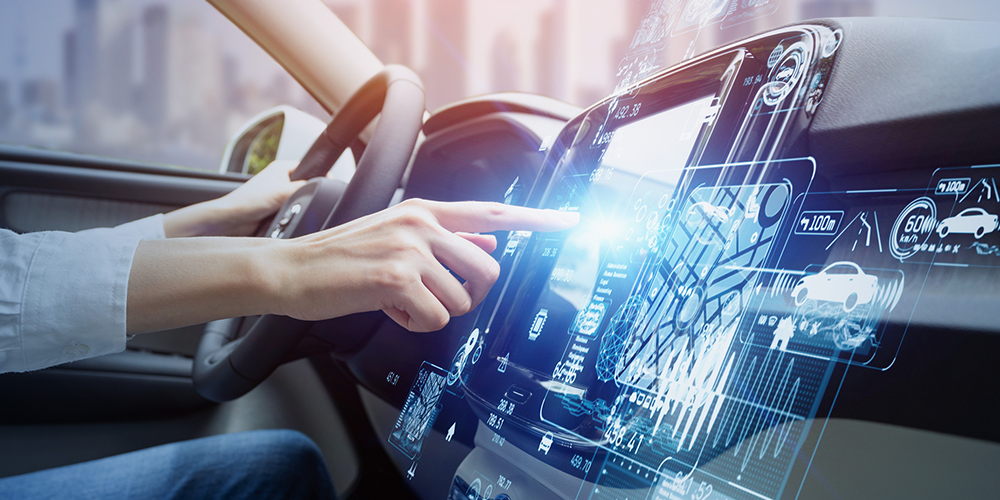Winds of disruption seen in consumer payments and retail banking are heavier than ever in banks’ wholesale payments and cash management business, which generates annual revenues of more than $250bn. This business provides payments solutions for suppliers and liquidity management for treasurers.
Until recently, banks as incumbents have enjoyed returns on equity of 20% to 40% and have leveraged this business as an anchor for large corporate relationships (with opportunities for cross-selling). Fintechs and other non-banks have made a dent in the market share of these banks, and other banks like Goldman Sachs are entering this space too.
To protect their turf, incumbent banks must be ready to service emerging online business models in different industries by innovating at the intersection of digital lending and digital payments.
One area that is becoming increasingly digitalised is the automotive sector. Let’s look at the agenda for the next five years. We are starting to see shifts in investment towards electric car manufacturing. In Asia, non-banks like SP Mobility and Oyika are focused on installing charging stations. Non-bank platforms like Cazoo, Carvana, CarMax, Cars24, CARRO and olx are focused on converting motorbike owners to used-car owners in India, Latin America and Southeast Asia, where less than 12% of the population own cars (compared to more than 50% in the US). Other priorities include lowering distribution costs by 10% to 20% by eliminating traditional dealership models and revolutionising the concept of car ownership.
In many regions like western Europe and Singapore, we can pay monthly subscriptions for car registration, road tax, 24-hour assistance, general inspection, repairs and insurance. This enables customers to make multiple payments in one transaction. Customers can access transparent pricing and choose from a menu of services to include in monthly payments. This subscription model is expected to register a compound annual growth rate of more than 80% and increase its market share to 22% by 2025, up from 3% now.
As subscription offerings scale up, particularly in online car sales, this will transform traditional leasing and renting models. Innovative platforms like Carvana have seen lending contribute to almost 50% of the gross profit per car unit and increase the transaction size of cars purchased. In 2020, leasing and financed vehicles made up 28% of Volkswagen’s vehicle sales. The growth in financial services business helped offset the contraction in new vehicle sales. JP Morgan’s recent purchase of a majority stake in Volkswagen’s payments business is likely to have a significant impact on the industry and beyond.
Personal finance company SoFi’s recent acquisition of banking and payments platform Galileo, and payments company Saltpay’s acquisition of third-party payments platform Tutuka has turned attention to issuing processors. I expect to see more innovation in these processors, with new features introduced such as the ability to freeze or unfreeze customers’ cards and real-time alerts. We will see new buy-now-pay-later, lending and credit models emerge in the automotive industry that combine the credit history of the driver, information on the car and the platforms of the next generation of issuers.
Innovation in digital payments can provide a better customer experience by making in-car payments for toll charges, parking and fuel or charging electric cars. Payments platforms like LogPay in Europe are steering such innovation. For this to be possible, payment processors will need to partner with fuelling stations and issue fuel cards that enable cardholders to refuel or charge at the nearest station. They will also need to integrate with car parking and toll operators directly or on aggregators of parking operators.
Figure 1. Software will build a new automotive industry. Cars may transform into digital wallets!

Source: Sirish Kumar
For banks, this shift to digitalisation is difficult but not impossible. Banks will need to embrace an innovative mindset and onboard new skills to:
- Collaborate with tech platforms and build a cloud-based ecosystem of multiple players including car manufacturers, insurance providers, payments tech, utility providers and retailers.
- Build infrastructure to support:
- micro and real-time payments
- the evolution of digital currencies in the next three to five years – I believe the first use cases for adoption of central bank digital currency domestically and across borders will emerge from this line of wholesale payments.
- Build tools that aggregate real-time cash flow and enable cash flow forecasting.
- Invest in a new digital bank if building new capabilities on the legacy systems will take more time and incur higher costs.
Sirish Kumar, former CFO, India and Asean at PayPal, is leveraging tech to scale financial inclusion in Asia.
